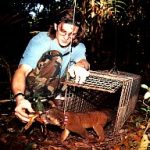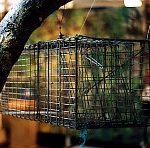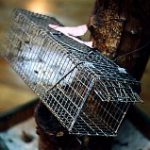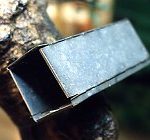Why use cages to study animals?
Sometimes seeing an animal is not enough: we want to know its weight or size; we need to look at it closely to decide what species it is; we want to make it regurgitate to find out what it has been eating. Some animals are difficult to see, but they can be caught in a trap if it is properly baited. The “live traps” that we use don´t kill the animals.
What kinds of animals are caught in traps?
This depends on the size of the trap (small for mice, rats, small possums; larger for kinkajous, agoutis, coatis), on the bait (palm nuts or dried corn for rodents; bananas for coatis, kinkajous; meat for carnivores), on the location of the trap (on the forest floor for pacas, agoutis, spiny rats; on low tree branches for squirrels; high in the canopy for kinkajous, coatis, some oppossums).
Where are traps placed?
This depends on the habits of the animals that are to be trapped and on the goals of the experiment. Traps may be located on the ground, on low trunks, or on tree branches in the forest canopy. They may be placed near streams or watering spots where animals come to drink, on trails or near animal burrows.
Who uses traps?
It is important that the people who use traps to study animals are well trained. Animals may become very stressed if the trap that they are it is exposed to too much sun or rain, or if they are forced to go without food. Researchers who use traps check them often and release the animals before they become too stressed. In many areas, researchers have to apply for a permit that allows them to trap animals.
What does trapping tell us?
What animals are in an area? How do natural events (draught, flooding, disease, scarcity of certain types of food, seasonal changes) affect animals? How do people (hunting, agriculture, tourism, scientists) affect animals? Roland Keys lets a kinkajou out of a trap



